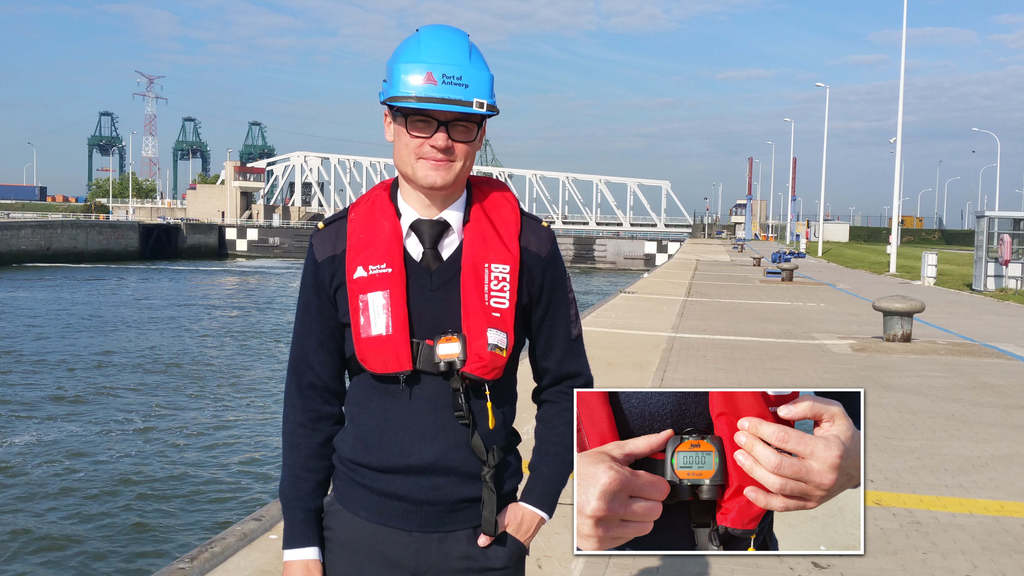

|
Edward Lowton
Editor |


|
| Home> | Health, Safety & Welfare | >Breathing safely | >Port ops for personal VOC monitors |
Port ops for personal VOC monitors
14 September 2017
The Port of Antwerp is committed to ensuring the on-going health & safety of its employees and is now one of the largest users of Cub personal volatile organic compound (VOC) monitors from Ion Science.

Antwerp is one of the biggest ports in the world, employing some 1,650 people and about 150,000 in total. It covers an area measuring 12,068 hectares, or about 20,000 football fields. The top 10 chemical producers in the world are present in Antwerp with four refineries (Total, ExxonMobil, Gunvor Petroleum Antwerp and ATPC Bitumen) located in the Port itself. The recent construction of the biggest ethylene terminal in Europe by Ineos Oxide also confirms the area as a hub for chemical feedstocks.
A spokesperson for the Port of Antwerp says: “We take the health & safety of employees very seriously. With the high volume of petrochemical processing and handling in the port, we have been searching for a high quality yet cost effective PID instrument that would help protect staff from exposure to dangerous levels of VOCs.
“Every employee of the Port Authority working in the port area now wears a Cub personal PID that will give an early warning of the presence of hazardous vapours or gases. Initially approached by Ion Science’s distributor, Euro Index, we chose the Cub for its small and unobtrusive design. Plus it seemed to be the only instrument on the market that was compact enough to be worn comfortably as a personal safety device.
“The Cub is easy to operate, reliable and robust which makes it ideal for use in the port environment. The training and service provided by Ion Science’s distributor, Euro- Index, was also very good.”
Extremely comfortable to wear, Ion Science’s Cub is said to be the smallest and lightest personal PID available. It offers a dynamic range of one parts per billion (ppb) to 5000 parts per million (ppm) sensitivity, giving an early warning of exposure to hazardous gases, including benzene.
When worker exposure exceeds pre-set limits the Cub’s audible, vibrating and flashing LED alarms provides an alert to the gases present. Readings are displayed on a bright, back-lit LCD display with selectable data logging time. An independent alarm sounds to the employee if to the employee if the cabinet is not functioning properly but also records a quantifiable measure of exposure to VOCs.
The Cub is available as a standard instrument with 10.6 eV lamp for accurate detection of a wide range of VOCs to ppm levels. The CubTAC ppm variant with 10.0 eV lamp accurately detects total aromatic compounds (TACs), including benzene. Both models can be upgraded to ppb sensitivity quickly and easily via Ion Science’s micro website.
Ion Science says Cub’s MiniPID sensor technology has been independently verified as best performing for speed, accuracy and humidity resistant operation. Innovative anti-contamination and Fence Electrode technology provide extended run time in challenging environments.
- 'High sense' sensor
- Award for VOC monitor
- Expanded role
- Gas detection systems on show
- National Clean Air Day 2022: Air quality monitoring VOCs
- Checking for benzene
- Humidity resistant sensor
- Detects total aromatic compounds
- Range of five MiniPID 2 sensors
- ION Science's MiniPID Sensors win Queen’s Award

















